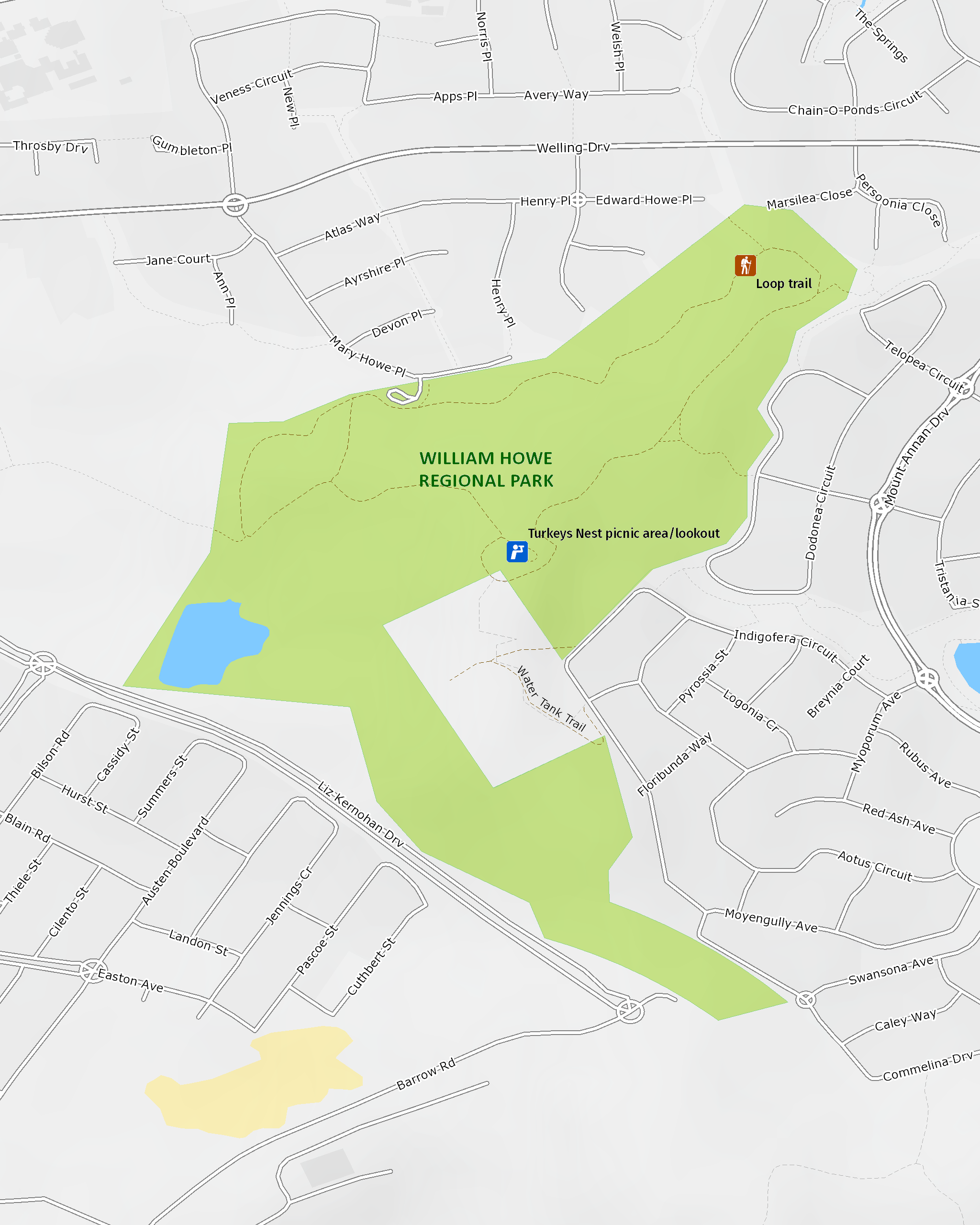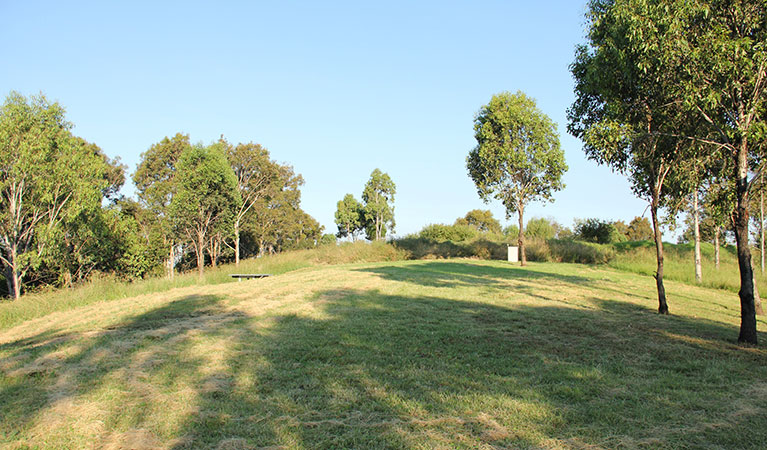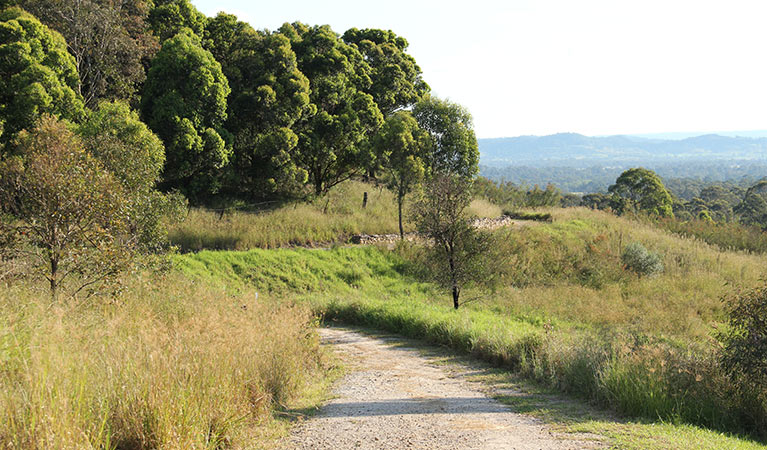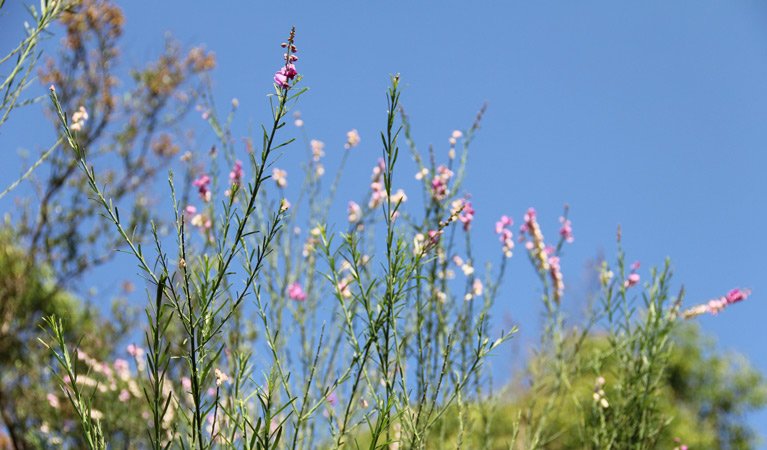William Howe Regional Park
Overview
Walk your dog, enjoy a family picnic or go for a rejuvenating walk or jog in this lovely green space near Campbelltown in Sydney’s southwest.
Read more about William Howe Regional Park
Discover a beautiful big back garden at William Howe Regional Park, a lovely oasis in the heart of south-western Sydney. Take a walk along the Loop trail, play hide and seek with the kids among the trees and let everyone get their fill of fresh air.
Head to Turkeys Nest picnic area for a tasty feast and enjoy the view, stretching southwest over the Razorback Mountains and the Greater Blue Mountains World Heritage Property.
Local alerts
For the latest updates on fires, closures and other alerts in this area, see https://uat.nswparks.cloud/visit-a-park/parks/william-howe-regional-park/local-alerts
Map

Map legend

Contact
- in the Sydney and surrounds region
William Howe Regional Park is always open but may have to close at times due to poor weather or fire danger.
-
-
Scheyville office
02 4580 2750
Contact hours: Monday to Friday, 8.30am to 4.30pm. Closed public holidays. - 71 Memorial Drive, Scheyville 2756
-
Email: npws.cumberland@environment.nsw.gov.au
-
Scheyville office
Visitor info
All the practical information you need to know about William Howe Regional Park.
Maps and downloads
Nearby towns
Campbelltown (10 km)
For nature lovers, the Macarthur region has plenty of natural attractions. Explore nature reserves and wildlife trails or see spectacular native flora and fauna at the Australian Botanic Garden Mount Annan, the largest botanic garden in Australia.
Parramatta (57 km)
Parramatta offers a fascinating insight into early colonial life in Australia. Don't miss a visit to Old Government House, now one of 11 Australian Convict Sites on the UNESCO World Heritage list.
Sydney City Centre (65 km)
No trip to Sydney is complete without spending some time in the city’s beautiful parks. Whether it’s in central areas like Hyde Park or the Royal Botanic Gardens or further out in Centennial Parklands, there’s plenty of green space to go out and enjoy.
Learn more
William Howe Regional Park is a special place. Here are just some of the reasons why:
Ancient landscapes

William Howe Regional Park is within the traditional lands of the Sweet Water Dharawal Aboriginal People. The park's prominent and elevated setting was important for communication, camping and spotting animals. The park's landscapes features Aboriginal storylines and continues to be an important place for Aboriginal people today.
Nature in the suburbs

Whether you're heading out for a run, a walk with the dog or a weekend picnic with the kids, it's great to have a local park where you can get back in touch with nature. Listen to the birds, check out the views and enjoy the feeling of space that comes with getting out and about in nature.
Extend your backyard

Situated at the end of several suburban streets, you can enjoy William Howe Regional Park any time you feel like a good dose of fresh air. Walk after work, take the kids for a ramble to burn off some energy, head out with your dogs or find a quiet spot to take time out from a busy day - you'll feel all the better for it.
Plants and animals protected in this park
Animals
-

Brown-striped frog (Lymnastes peronii)
One of the most common frogs found in Australia, the ground-dwelling brown-striped frog lives in ponds, dams and swamps along the east coast. Also known as the striped marsh frog, this amphibian grows to 6.5cm across and has a distinctive ‘tok’ call that can be heard all year round.
-

Peron's tree frog (Litoria peroni)
Peron’s tree frog is found right across NSW. These tree-climbing and ground-dwelling Australian animals can quickly change colour, ranging from pale green-grey by day, to a reddish brown with emerald green flecks at night. The male frog has a drill-like call, which has been described as a 'maniacal cackle’.
-

Eastern blue-tongue lizard (Tiliqua scinciodes)
The eastern blue-tongue lizard, one of the largest skinks in Australia, is found throughout most of NSW. When threatened, the eastern blue-tongue lizard displays its blue tongue in a wide-mouthed intimidating show. Not an agile animal, they feed on slow-moving beetles and snails.
-
Cumberland Plain land snail (Meridolum corneovirens)
The endangered Cumberland Plain land snail is only found on the Cumberland Plain, west of Sydney. During drought it digs deep into the soil to escape harsh conditions. Its brown shell is thin and fragile.
Education resources (1)
What we're doing
William Howe Regional Park has management strategies in place to protect and conserve the values of this park. View the detailed park and fire management documents. Here is just some of the work we’re doing to conserve these values:
Managing weeds, pest animals and other threats
Pests and weeds have a significant impact to the ecosystems within William Howe Regional Park. NPWS carries out risk assessments for new and emerging weeds to protect biodiversity in this park.
Developing visitor facilities and experiences
NPWS is committed to providing high-quality facilities for visitors to enjoy in all its parks. William Howe Regional Park works to ensure park visitors are well catered for. It regularly reviews and maintains its visitor policies and facilities, and examines opportunities for amendments. Displays and signage are upgraded as required, and conservation is a fundamental consideration in all management decisions.
Conserving our Aboriginal culture
William Howe Regional Park sits within the traditional lands of the Sweet Water Dharawal Aboriginal People. Aboriginal heritage sites within the park are identified and recorded, and conservation programs are in place. NPWS involves the local Aboriginal community in managing and interpreting the park’s cultural values, and works to minimise any negative impacts upon this.
Managing fire
NSW is one of the most bushfire prone areas in the world as a result of our climate, weather systems, vegetation and the rugged terrain. NPWS is committed to maintaining natural and cultural heritage values and minimising the likelihood and impact of bushfires via a strategic program of fire research, fire planning, hazard reduction, highly trained rapid response firefighting crews and community alerts.

